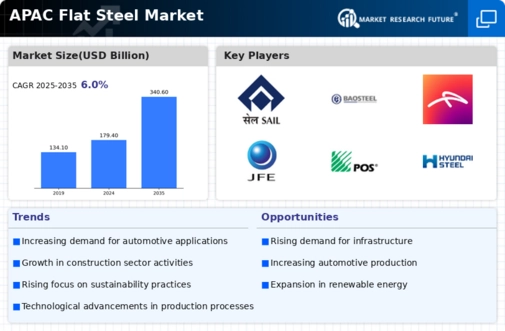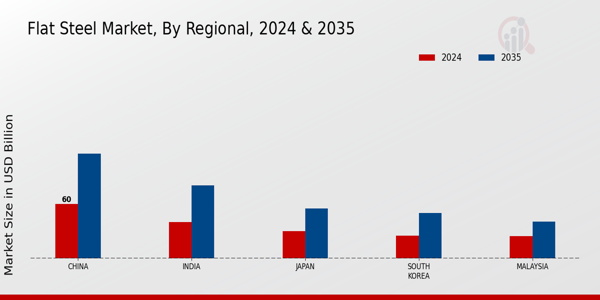The APAC Flat Steel Market is characterized by a dynamic competitive landscape where numerous players vie for market share and influence through innovation and strategic positioning. Flat steel products, including sheets and plates, are extensively used across various industries such as automotive, construction, and appliances, making this market essential for regional economic development. The competition is driven by factors such as production capacity, pricing strategies, strategic partnerships, and an increasing focus on sustainability and advanced manufacturing technologies.
Additionally, the varying degrees of demand across different APAC countries, influenced by urbanization and industrialization rates, create opportunities and challenges for companies operating in this space. Steel Authority of India Limited is a prominent player in the APAC Flat Steel Market, ensuring a solid competitive stance through its vast production capabilities and diverse product portfolio. With a strong presence in the Indian market, the company focuses on delivering high-quality flat steel products that cater to both domestic and international demands. The company is renowned for its consistency in quality and reliability, which enhances its reputation among customers.
Steel Authority of India Limited has also invested in modern technology and production processes, positioning itself as an innovator in the industry. Furthermore, its strategic initiatives to optimize operational efficiency and expand market reach are indicative of its strengths in navigating the competitive landscape of the APAC region. In the realm of the APAC Flat Steel Market, Baosteel stands out as a significant competitor with a strong emphasis on research and development, leading to high-performance flat steel products that are widely recognized in the industry.
Known for its extensive product range, which includes cold-rolled and hot-rolled steel sheets, Baosteel has established itself as a major supplier across various sectors in the region. The company boasts advanced manufacturing capabilities and a strong distribution network that enables it to meet the diverse demands of its customers effectively. Furthermore, Baosteel has engaged in strategic mergers and acquisitions to bolster its market presence, enhancing its competitiveness through increased capacity and technological advancements.
This strategic approach not only solidifies Baosteel’s position in the APAC Flat Steel Market but also underscores its commitment to driving innovation and sustainable growth within the industry.























Leave a Comment